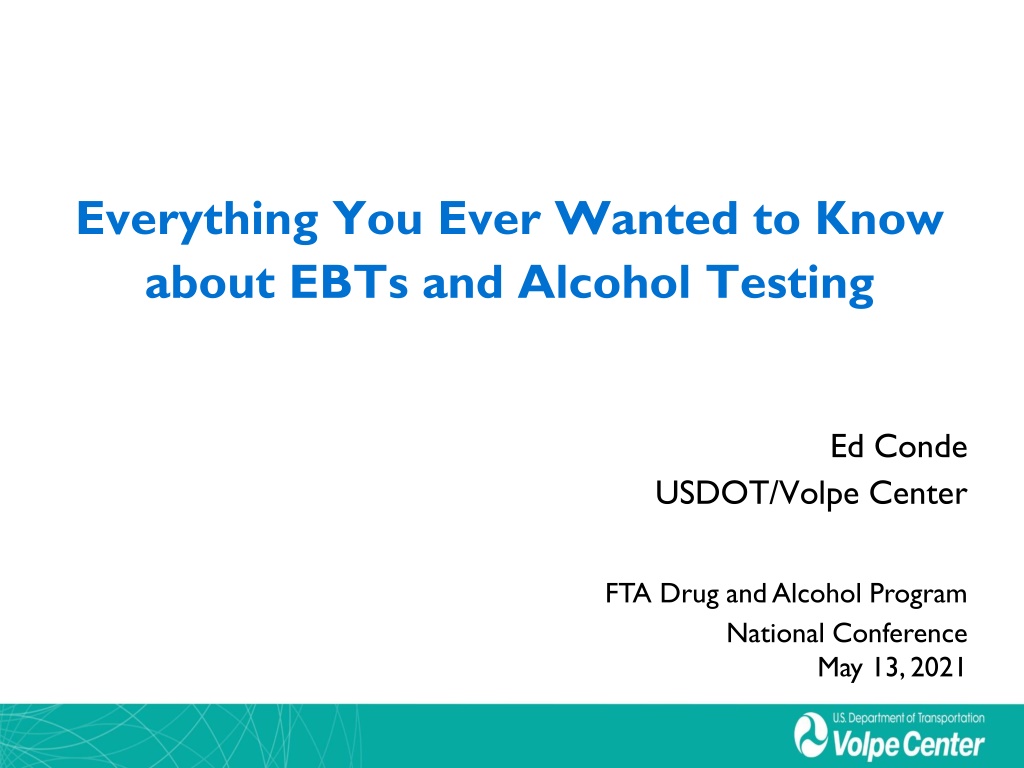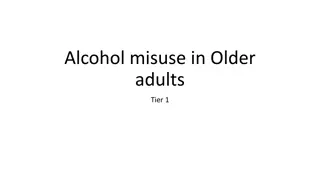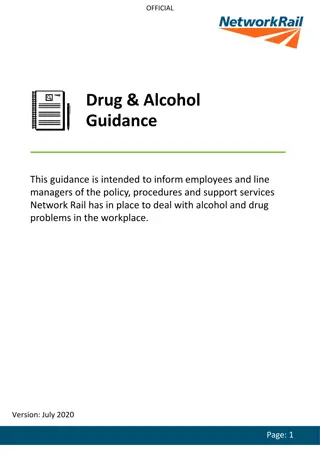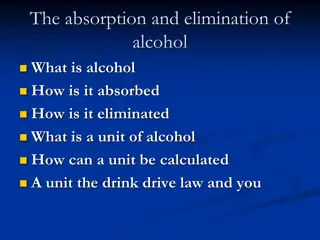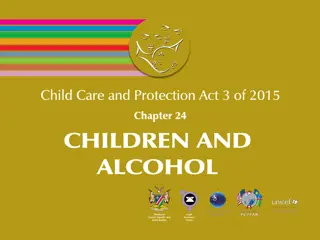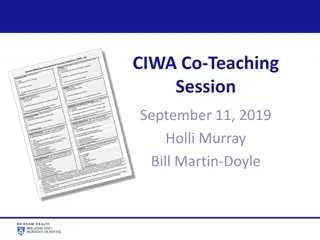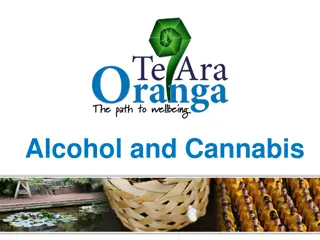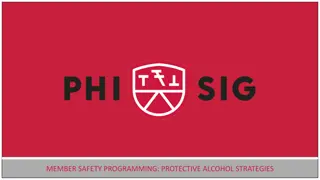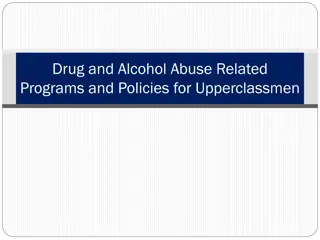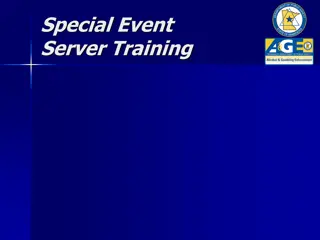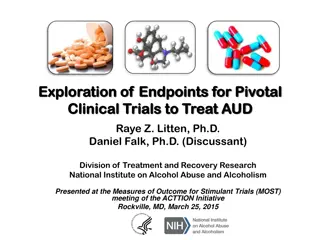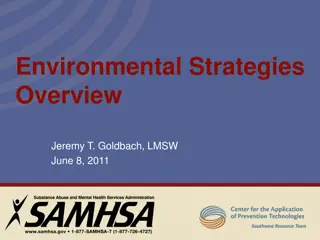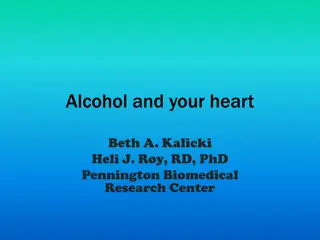Understanding EBTs and Alcohol Testing: A Comprehensive Overview
Explore a detailed presentation by Ed Conde from the USDOT/Volpe Center FTA National Conference on the critical role of Evidential Breath Testers (EBTs) and alcohol testing. Learn about the importance of accurate testing, legal challenges, device requirements, court testimonies, and factors affecting test results. Discover insights on EBT types, flow rates, and key considerations for reliable testing in various settings.
Download Presentation

Please find below an Image/Link to download the presentation.
The content on the website is provided AS IS for your information and personal use only. It may not be sold, licensed, or shared on other websites without obtaining consent from the author. Download presentation by click this link. If you encounter any issues during the download, it is possible that the publisher has removed the file from their server.
E N D
Presentation Transcript
Everything You Ever Wanted to Know about EBTs and Alcohol Testing Ed Conde USDOT/Volpe Center FTA Drug and Alcohol Program National Conference May 13, 2021
Speaker Ed Conde Alcohol Countermeasures Laboratory USDOT/Volpe Center 617-494-2428 edward.conde@dot.gov 2
Introduction Volpe Alcohol Countermeasures Lab We are responsible for testing all of the breath alcohol measuring devices that are used by police and in workplace testing. We fail most devices that we test. Our mission is to ensure that all devices that we pass are precise and accurate. We testify at many legal challenges to approved breath testers. 3
Why Are We Important? All devices used for workplace testing must be on the NHTSA Conforming Products Lists (CPLs) Alcohol Screening Devices (ASDs) used for preliminary tests must be on the Conforming Products List (CPL) for Alcohol Screening Devices Evidential Breath Testers (EBTs) used for confirmation tests must be on the Conforming Products List (CPL) for Evidential Breath Testers Calibration Units (CUs) used for accuracy checks must be on the Conforming Products List (CPL) for Calibrating Units 4
Court Testimony We have testified in cases involving: Police subject testing Workplace subject testing We have testified in: Federal Court State Court State Supreme Court 5
Effects on Results (Subject) Tobacco, gum, mints, mouthwash Medicines Hand sanitizer Perfumes Different alcohols 6
Effects on Results (Environment) Cleaning agents Altitude Humidity 7
Medical Conditions Diabetes Crash dieting Auto-brewery syndrome 8
Evidential Breath Testers (EBTs) Different types Lifespan 9
EBTs Flow Rates BASS Minimum volumes Maximum volumes Minimum flow rate Maximum flow rate 10
Beating the Test? Low volume Breath temperature - hyperventilation Breath bypass 11
Manual Mode What is it? What is it for? Problems with using it. 12
Court Cases A) Hardware/Software Issues B) Manufacturer's Instructions C) Record Keeping D) Test Procedure 13
Top Causes of Lost Cases A) Hardware/Software Issues Device modified from the one on the CPL Screener, EBT, or Calibrator no longer on CPL Expired Gas Tank or Alcohol Solution 14
Workplace Rules Screening Tests 40.229 What devices are used to conduct alcohol screening tests? EBTs and ASDs on the NHTSA conforming products lists (CPL) for evidential and non-evidential devices are the only devices you are allowed to use to conduct alcohol screening tests under this part. 15
Workplace Rules Confirmation 40.231 What devices are used to conduct alcohol confirmation tests? (a) EBTs on the NHTSA CPL for evidential devices that meet the requirements of paragraph (b) of this section are the only devices you may use to conduct alcohol confirmation tests under this part. 16
Workplace Rules Use of EBTs 40.233 What are the requirements for proper use and care of EBTs? (c) As the user of the EBT, you must do the following: (2) In conducting external calibration checks, you must use only calibration devices appearing on NHTSA's CPL for Calibrating Units for Breath Alcohol Tests. 17
Devices Modified Evidential Breath Testers (EBTs), Screeners, and Calibrating Units are tested and approved with specific hardware & software. Changes to these devices that are not approved by NHTSA may affect their standing on the Conforming Products List (CPL). 18
Devices No Longer on CPL Check periodically to ensure that Screeners, EBTs, and Calibrators are still on the CPLs. A device can be removed from the CPL if the manufacturer changes it and then it does not conform to the Model Specifications. 19
Expired Gas & Solutions Check all ethanol gas tanks for the expiration date and record it. Make sure the expiration date is known to all users and that a backup unexpired gas tank is on site. Check all Alcohol Solutions (if used) for expiration dates. 20
Top Causes of Lost Cases B) Manufacturer s Instructions Operating Manual Quality Assurance Plan (QAP) Users all certified 21
Workplace Rules Use of EBTs 40.233 What are the requirements for proper use and care of EBTs? (c) As the user of the EBT, you must do the following: (1) You must follow the manufacturer's instructions, including performance of external calibration checks at the intervals the instructions specify. 22
Operating Manual The Operating Manuals should be read thoroughly and kept near Evidential Breath Testers, Screeners, and Calibrators. The Operating Manual should be consulted whenever a question arises about proper instrument usage. 23
Quality Assurance Plans (QAPs) QAPs are special instructions for workplace testing personnel. They are available from the manufacturers. All calibration devices, screening devices, and evidential breath testers used in workplace testing have QAPs. Every test site should have QAPs for all devices displayed where test personnel can see them. All test personnel should be very familiar with the QAPs for all devices. 24
EBT Quality Assurance Plan (QAP) Operating Environment 1) The Phoenix is designed to be used in the temperature range of 0 C to 40 C. 2) The Phoenix is capable of being used as either a stationary or mobile unit as defined by NHTSA. Calibration 1) Calibration must be performed by a certified operator utilizing dry gas or a wet bath simulator included on the NHTSA Conforming Products List of Calibrating Units for Breath Alcohol instruments and alcohol standards approved by Lifeloc Technologies, Inc. 2) The Phoenix must be calibrated every 12 months or when the instrument fails 2 consecutive external calibration checks. 3) The Phoenix may be calibrated using a variety of standard values because the instrument instructs the operator to set the value of the standard during the calibration process. Please refer to the operations manual for specific information regarding selecting standards. Lifeloc Technologies requires that standards used in calibration be accurate to +/- .002 BAC. Verification (calibration check) 1) A Verification must be performed by a certified operator utilizing dry gas or a wet bath simulator included on the NHTSA Conforming Products List of Calibration Units for Breath Alcohol Instruments and alcohol standards approved by Lifeloc Technologies, Inc. 2) A Verification must be conducted every thirty (30) days and as soon as circumstances permit after a positive alcohol test as defined by user policy and DOT regulations. 3) A Verification must also be conducted if the air blank procedure fails to show .000 after 2 consecutive attempts. 26 4) A Verification must be performed if the unit has undergone repair.
Users All Certified Make sure that all Users are certified by the manufacturer, if necessary. 27
Top Causes of Lost Cases C) Record Keeping Calibration Logs Complete? follow QAP? Calibration Check Logs Complete? follow QAP? Maintenance Records follow recommendations? 28
Workplace Rules Use of EBTs 40.233 What are the requirements for proper use and care of EBTs? (c) As the user of the EBT, you must do the following: (4) You must maintain records of the inspection, maintenance, and calibration of EBTs as provided in 40.333(a)(2). 29
Calibration A calibration is very different than a calibration check (also known as accuracy check or verification). A calibration actually changes the way the device measures alcohol. Think of it as being similar to adjusting the zero dial on a scale. It is very important that users keep a log of all calibrations and ensure that all calibrations are performed at the proper time and by the proper person check the QAP and the manual. 30
Calibration Checks Calibration Checks (accuracy checks, verifications) are different from calibrations. A calibration check is simply a measurement to verify that the breath tester is properly calibrated at the time of the test. Think of it as putting a 50-pound weight on a scale and verifying that the scale measures 50 pounds. It is very important that users keep a log of all calibration checks and ensure that all calibration checks are performed at the proper time and by the proper person Check the QAP and manual. 31
Maintenance Records Device maintenance should be performed as instructed in the operating manual and in the QAP. It is very important that users keep a log of all maintenance and ensure that all maintenance is performed at the proper time listed and by the proper person Check the QAP and the manual. If the device needs to be sent to the manufacturer periodically then do it within the time specified. Sensors and other components do not last forever. Suspect a device when error messages appear. 32
Workplace Rules Use of EBTs 40.233 What are the requirements for proper use and care of EBTs? (c) As the user of the EBT), you must do the following: (4) You must maintain records of the inspection, maintenance, and calibration of EBTs as provided in 40.333(a)(2). (5) You must ensure that inspection, maintenance, and calibration of the EBT are performed by its manufacturer or a maintenance representative certified either by the manufacturer or by a state health agency or other appropriate state agency. 33
Top Causes of Lost Cases D) Test Procedure: Air Blank before test. Why? Calibration Check before and after test. Why? Waiting Period before test. Why? 2 tests 15 minutes apart. Why? Error messages ignored. 34
Air Blank Air Blank - a test of the air around a breath tester to ensure that no alcohol is present. A zero air blank ensures that any alcohol measured by the breath tester is from the test subject. 35
Workplace Rules - Fatal Flaws 40.267 What problems always cause an alcohol test to be cancelled? As an employer, a BAT, or an STT, you must cancel an alcohol test if any of the following problems occur. These are fatal flaws. (c) In the case of a confirmation test: (2) The BAT does not conduct an air blank before the confirmation test. (3) There is not a 0.00 result on the air blank conducted before the confirmation test. 36
Calibration Check Before & After A Calibration Check should be done before and after a positive subject test. Calibration Checks before and after a positive subject test prove that the breath tester was calibrated properly during the subject test. Calibration Checks should be done as often as specified in the QAP usually every 30 days. It is good practice to do a Calibration Check as soon as possible after a positive test. 37
Workplace Rules - Fatal Flaws 40.267 What problems always cause an alcohol test to be cancelled? As an employer, a BAT, or an STT, you must cancel an alcohol test if any of the following problems occur. These are fatal flaws. (5) The next external calibration check of the EBT produces a result that differs by more than the tolerance stated in the QAP from the known value of the test standard. In this case, every result of 0.02 or above obtained on the EBT since the last valid external calibration check is cancelled. 38
Waiting Period A 15-minute Waiting Period before a breath test ensures that any lingering alcohol in the mouth has a chance to dissipate. Mouth Alcohol can severely affect a breath test result. An example of Mouth Alcohol would be swishing alcohol in your mouth, spitting it out, and immediately blowing into a breath tester. 39
2 Tests,15 Minutes Apart There should be at least a 15-minute wait between the screening test and the confirmation test. A large discrepancy between the screening result and the confirmation result may be a sign of mouth alcohol. 40
Low BrAC Test Results Results near 0.02 can be within error range Results near 0.02 are open to challenge Keep good calibration check logs Do a calibration check after a positive test 41
EBT Error Messages Always suspect the instrument when error messages are displayed. Sensors and other components can degrade and fail over time. Consult the manual or contact the manufacturer when error messages are displayed. 42
Maintenance & Calibration Check the Operator s Manual and the QAP Do manufacturer s maintenance on time Do calibrations as directed Keep good records 43
User Errors Not following QAP & manual Not getting an air blank Not checking expiration dates Not keeping proper records Not doing maintenance Not heeding error messages Not waiting 15 minutes 44
New Products EBTs have become computers Software very important Automated calibration by Lifeloc Mouth alcohol hand-held IRs 45
Conclusion Do not modify a breath tester or calibrator Check the CPLs Check Expiration Dates Refer to operating manual and QAPs Make sure that users are certified Keep good logs and maintenance records 46
Conclusion (cont.) Take good air blanks. Do calibration checks before and after positive tests. 15-minute wait between Preliminary and Confirmation test to rule out mouth alcohol. Similar results on the preliminary test and the confirmation test confirm that there was no mouth alcohol. Do not ignore error messages and continue to test. 47
Questions? Ed Conde Alcohol Countermeasures Laboratory USDOT/Volpe Center 617-494-2428 edward.conde@dot.gov 48
